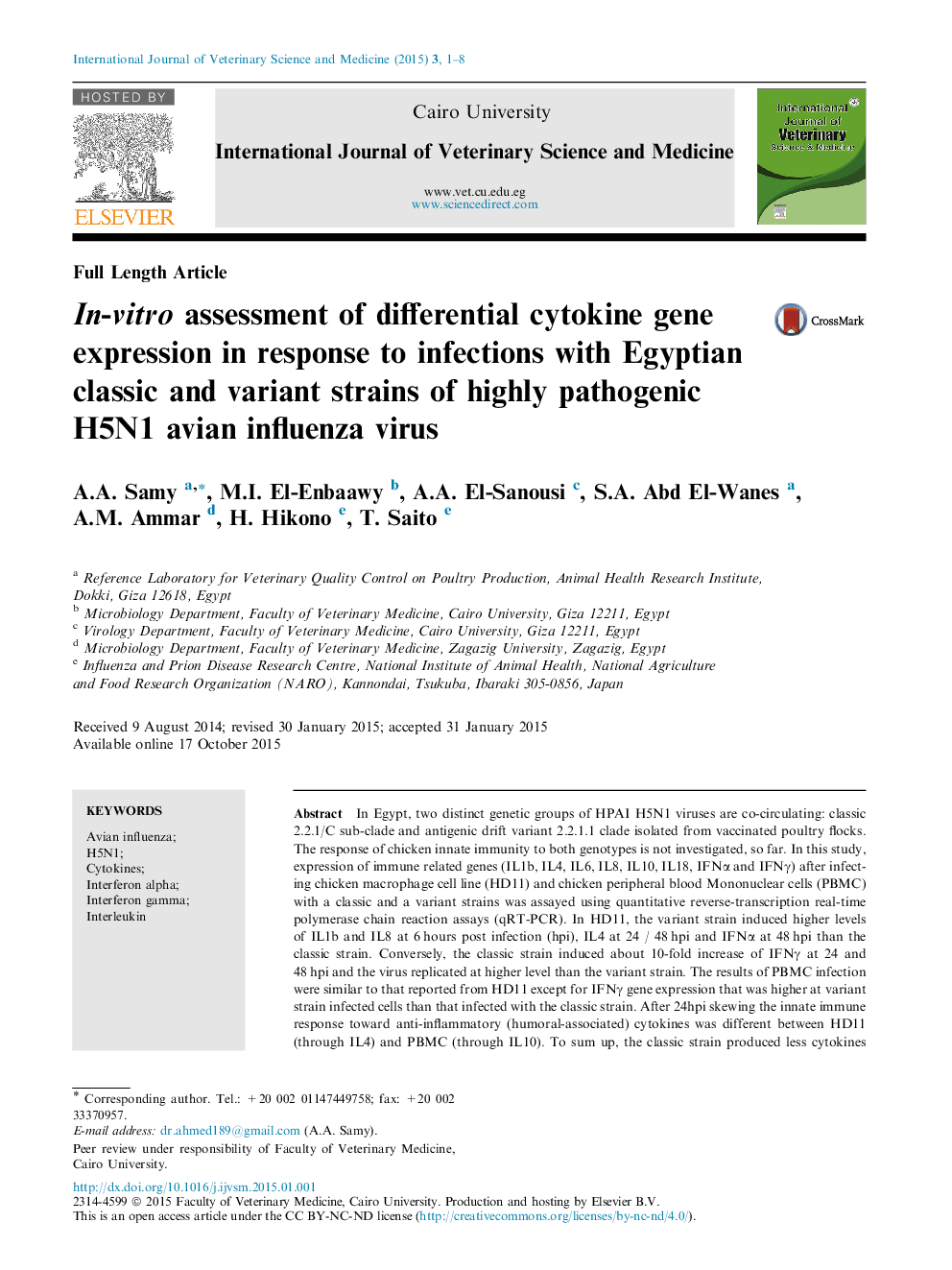| Article ID | Journal | Published Year | Pages | File Type |
|---|---|---|---|---|
| 2394260 | International Journal of Veterinary Science and Medicine | 2015 | 8 Pages |
In Egypt, two distinct genetic groups of HPAI H5N1 viruses are co-circulating: classic 2.2.1/C sub-clade and antigenic drift variant 2.2.1.1 clade isolated from vaccinated poultry flocks. The response of chicken innate immunity to both genotypes is not investigated, so far. In this study, expression of immune related genes (IL1b, IL4, IL6, IL8, IL10, IL18, IFNα and IFNγ) after infecting chicken macrophage cell line (HD11) and chicken peripheral blood Mononuclear cells (PBMC) with a classic and a variant strains was assayed using quantitative reverse-transcription real-time polymerase chain reaction assays (qRT-PCR). In HD11, the variant strain induced higher levels of IL1b and IL8 at 6 hours post infection (hpi), IL4 at 24 / 48 hpi and IFNα at 48 hpi than the classic strain. Conversely, the classic strain induced about 10-fold increase of IFNγ at 24 and 48 hpi and the virus replicated at higher level than the variant strain. The results of PBMC infection were similar to that reported from HD11 except for IFNγ gene expression that was higher at variant strain infected cells than that infected with the classic strain. After 24hpi skewing the innate immune response toward anti-inflammatory (humoral-associated) cytokines was different between HD11 (through IL4) and PBMC (through IL10). To sum up, the classic strain produced less cytokines which may indicate adaptation to evade the recognition by the innate immune system and explain its higher pathogenicity.
